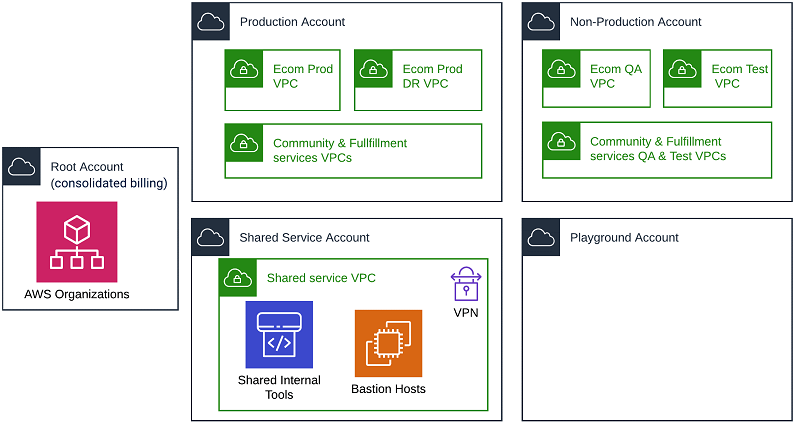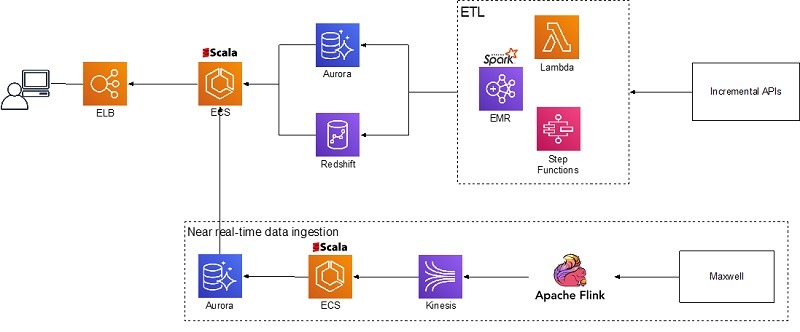AWS Database Blog
Tag: migration
Migrating from SAP ASE to Amazon Aurora PostgreSQL
Enterprise customers often have legacy applications running on an older variant of databases, which impedes the applications’ scalability. In this high-speed cloud computing world, businesses are anxiously looking for solutions to migrate these databases to the cloud. Amazon Aurora is a highly available and managed relational database service with automatic scaling and high-performance features. The […]
How Minted scaled their online marketplace on Cyber Monday 2019 by migrating to AWS cloud and Amazon Aurora
This is a guest post by Minted. In their own words, “Minted is an online marketplace for independent artists. Connecting a global creative community directly to consumers, Minted uses technology that enables products to be shared by independent artists who typically lack access to traditional retail outlets. Products available on Minted include works of art, […]
Introducing the Amazon Database Migration Accelerator
Today, we announce the launch of Amazon Database Migration Accelerator (DMA). Amazon DMA brings together AWS Database Migration Service (DMS), AWS Schema Conversion Tool (SCT), and AWS database migration experts to help customers migrate away from traditional commercial databases at fixed prices. At launch, we offer Amazon DMA to customers migrating from Oracle and SQL […]
Migrating PostgreSQL from on-premises or Amazon EC2 to Amazon RDS using logical replication
PostgreSQL is one of the most advanced popular open-source relational database systems. With more than 30 years of development work, PostgreSQL has proven to be a highly reliable and robust database that can handle a large number of complicated data workloads. For many, PostgreSQL is the open-source database of choice when migrating from commercial databases […]
Migrating to Amazon DocumentDB with the hybrid method
This blog post was last reviewed and updated February, 2022. Amazon DocumentDB (with MongoDB compatibility) is a fast, scalable, highly available, and fully managed document database service that supports MongoDB workloads. You can use the same MongoDB 3.6, 4.0, or 5.0 application code, drivers, and tools to run, manage, and scale workloads on Amazon DocumentDB without […]
How Zendesk tripled performance by moving a legacy system onto Amazon Aurora and Amazon Redshift
This is a guest post by James Byrne, Engineering Leader at Zendesk, focusing on data pipeline development and operations for the Zendesk Explore analytics product, and Giedrius Praspaliauskas, AWS Solutions Architect. Zendesk is a CRM company that builds support, sales, and customer engagement software designed to foster better customer relationships. From large enterprises to startups, […]
Rolling back from a migration with AWS DMS
When migrating a database to a new system using AWS Database Migration Service (DMS), it is prudent to have a fallback strategy if the new system doesn’t work as expected. At a high level, there are four basic strategies for rolling back from a migration: basic fallback, fall forward, dual write, and bidirectional replication. Depending […]
Migrating a Neo4j graph database to Amazon Neptune with a fully automated utility
Amazon Neptune is a fully managed graph database service that makes it easy to build and run applications that work with highly connected datasets. You can benefit from the service’s purpose-built, high-performance, fast, scalable, and reliable graph database engine when you migrate data from your existing self-managed graph databases, such as Neo4j. This post shows […]
Migrating to Amazon DocumentDB with the online method
This blog post was last reviewed and updated February, 2022. Amazon DocumentDB (with MongoDB compatibility) is a fast, scalable, highly available, and fully managed document database service that supports MongoDB workloads. You can use the same MongoDB 3.6, 4.0, or 5.0 application code, drivers, and tools to run, manage, and scale workloads on Amazon DocumentDB […]
Migrating to Amazon Aurora MySQL with fallback option using GTID-based replication
When migrating production applications, it is often important to have a fallback option. This blog post demonstrates how to use global transaction identifier (GTID)-based replication to migrate Amazon RDS MySQL workloads to Amazon Aurora MySQL. We also discuss how to use a fallback mechanism in case you encounter any issues. For more information about GTID-based […]









